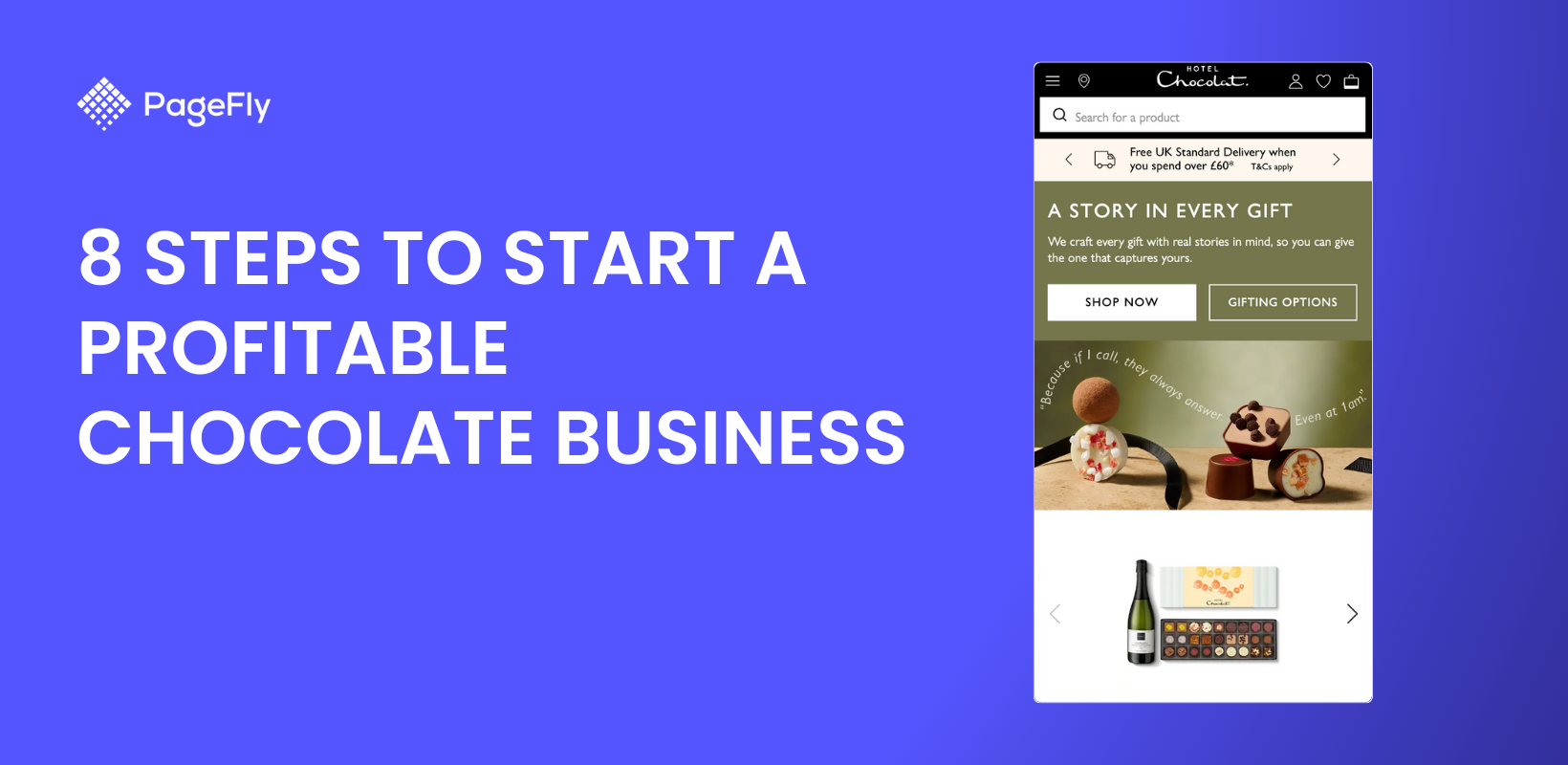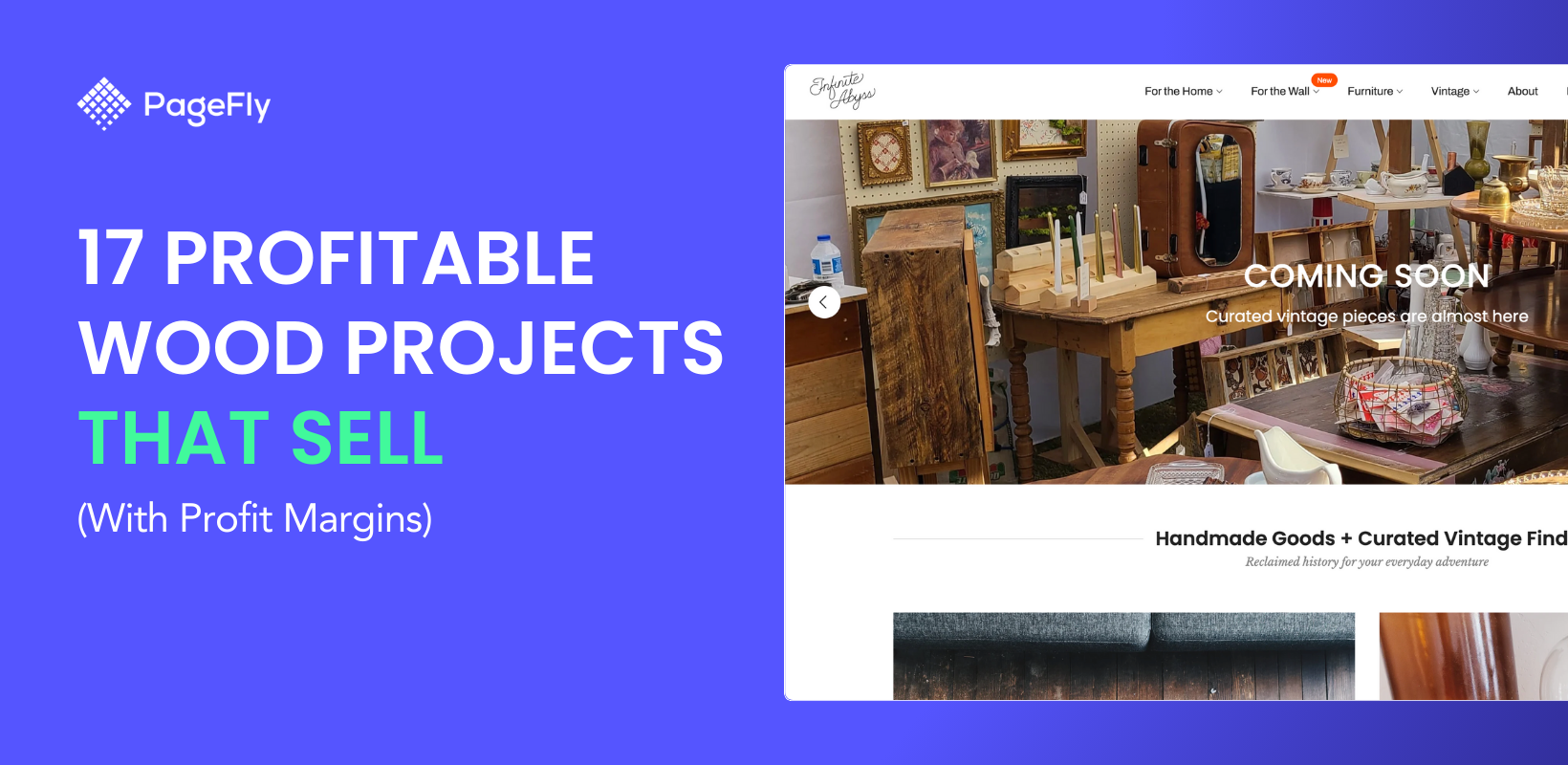Coming to the popular e-commerce platforms in the world right now, Shopify and Volusion are always in the competition for well-known online store builders against each other. Both are on the top choice for any e-commerce business owners which help them build an online store, add products, and payment details, and begin selling on their website. Although Shopify was created later than Volusion in 2006, it has become the 1st tool for an e-commerce platform with more than 1,000,000 online stores, offices around the globe, $200 billion worth of sales around 175 countries, and over 3,000 employees.
Both Shopify and Volusion are great platforms for e-commerce businesses, however, they still have some differences which make them suitable for different customers. In comparison, Shopify has better choices for sales features while Volusion is better for analytics and data tools. As a result, Shopify is best for small to mid-size Standard plans and Enterprise companies on Shopify Plus while Volusion is best for small and medium-size business owners, founders and operators.
However, it is necessary to compare all the aspects of both before making any decision to choose which one is better.
Table of contents
- Shopify and Volusion: A general look
- Pros and Cons of the Shopify and Volusion
- Features and ease of use
- Plans and Pricing
- Support
- Volusion and Shopify: Conclusion
I. Shopify and Volusion: A general look
Founded in 2006, Shopify has claimed its position as the leading e-commerce solution for any business which lets users easily launch and manage their online store. Shopify offers a large library of themes, templates, apps, and other features to help users design and establish their store websites.
It also helps owners at other crucial aspects like opening the stores in additional channels such as Amazon, eBay or Facebook, Pinterest, etc., or support in other sales functions (e.g. live chat, manage orders, shipping, and payments, etc.) Especially, talking about Shopify cannot exclude its great ecosystem (Shopify Community, Shopify Developers, Shopify Affiliate) where not only business owners but also freelancers, developers, and agencies can connect and make their profit from Shopify.
Came 7 years earlier, Volusion is also a cloud-based e-commerce platform that helps store owners build their online stores with sales support features and good insight tools. It is one of the oldest and leading hosted e-commerce solutions on the market, especially, it has made a lot of improvement both in selling features and offering unlimited bandwidth with its V2 (VOLT). With more than 180,000 entrepreneurs, Volusion has shown its places on the market for one of the top e-commerce platforms.
II. Pros and Cons of the Shopify and Volusion
| Volusion | Shopify | |
| Pros |
|
|
| Cons |
|
|
III. Features and ease of use
As both are top e-commerce platforms on the market right now, they both offer some basic and similar features, which are:
- Create and design store using their available templates and themes;
- Manage store using CMS (content management system);
- Analysis tools for sales features;
- Manage and support SEO;
- Accept online payment via a range of payment gateways
- Manage tax and shipping calculators.
There are still variant noticeable features for both:
| Features | Volusion | Shopify |
| Inventory Management | ✔️ | ✔️ |
| Upselling & Cross-Selling | ✔️ | ✔️(Paid app needed) |
| SEO tools | ✔️ | ✔️(Paid app needed) |
| Landing page builder | X | ✔️(Paid app needed) |
| In-house Fulfillment | X | ✔️ |
| App Store | ✔️ | ✔️ |
| Guest Checkout | ✔️ | ✔️ |
| Automatic shipping and Tax | ✔️ | ✔️ |
| Abandoned Cart recovery | ✔️ | ✔️ |
| Subscription/ Recurring | ✔️ | ✔️(Paid app needed) |
| Analytics tools | ✔️ | ✔️ |
| Personalized Products | ✔️ | ✔️(Paid app needed) |
| Real-time shipping/tracking | ✔️(Paid app needed) | ✔️ |
| Digital selling | X | ✔️ |
| Blog entry | X | ✔️ |
| Single-page checkout | ✔️ | X |
| 1-click upsell | X | ✔️(Paid app needed) |
3.1. Design
Within every single store, design one of the most important things which keep the store standing out and attract more customers. Both builders have various and nice-looking themes, which also will automatically resize to fit in multiple devices, but Shopify has a wider collection and modern design templates than Volusion.
Volusion offers 45 different themes including 11 free themes and 34 premium/ paid ones while Shopify’s collection has 73 themes including 9 free themes and 64 paid ones. At the first glance, Volusion offers more free templates, however, most of the free Shopify templates come in 2 or 3 variations and have cheaper paid templates than Volusion ($180 each), so the comparison is still lean toward Shopify.

Volusion Themes Store
Moreover, Shopify creates a single website for themes only, called Shopify themes.

Shopify Themes Editor
Through these sites, users can easily find the right templates by using filters for different prices, styles, industries, and more while Volusion doesn’t have any filters like that.

Shopify Themes Store
3.2 Sale features
01. Overall
Shopify allows users unlimited product listings and there’s no cap sales volume, in contrast, Volusion has limited caps sales on each plan. With caps at $50,000; $100,000; $250,000 and $500,000, it will automatically upgrade users to a higher plan once the sales limit has been hit. Putting more sales features to consider, Shopify is on the better look with more functions.
First, it offers an in-house Shopify Fulfillment Network which helps customers know which fulfillment center they should use based on the order locations and the inventory status with a custom packed option for their products. However, storage fees need to pay for Shopify calculated by square footage used at the warehouse and a transaction fee for each sale. Besides that, store owners can choose to work with different fulfillment providers.
Secondly, Shopify has built-in blog features and add up apps that help create and customize more blogs. In contrast, Volusion’s users use third-party software for their blogs which might cost more.
Not only with the blogs, but Shopify also has other nice built-in features such as abandoned carts and real-time shipping rates. Especially with its wide options of apps, users can own more features, for example, robust product search feature, subscription, reward points, and 1-click upsell.
However, Volusion is still known as a great platform for data-loving business owners with great analytics tools. Volusion provides users a mobile app that integrates all the analytics functions in just one look and ready to use anywhere.
02. Check out and payment gateways
Comparing in check out aspects, Volusion has built-in single-page checkout while Shopify does not. On the other hand, Shopify offers larger payment gateways options with 100 partners and its in-house processor which lets customers avoid Shopify’s transaction fees while Volusion only connects to Paypal, Stripe, and Authorize.net. If Volusion Payments is only available in the US, Shopify Payments can be used in 27 different countries.
Moreover, Shopify lets users do multi-currency selling while Volusion does not. This will support merchants from many countries outside of the US.
03. Sale forms
Not only selling on the online store, but there are also some other selling ways a merchant can include in their strategy. One of those is dropshipping in which store’s owners do not have to keep the actual products in stock but redirect them to the supplier when they take an order. Dropshipping is currently seeing an upward trend that Shopify is taking advantage of with various apps to facilitate it while Volusion is limited to just one integration.
Another way that makes Shopify stand out is Point of Sale which merchants can exercise their business in the real world (through a retail outlet, pop-up store, or event) by accepting both payment and sync inventory. Shopify POS includes a barcode scanner, a receipt printer, a till, and a label printer which customers can order directly from Shopify. This comes in any plan (using an app and a card reader provided by Shopify) but for the full functions, it will come to the “POS Pro” add on which costs $89 per month. Shopify’s POS Pro contains multiple location selling, buy online, and grab in one store, printed receipts, staff manager. Volusion also has POS functionality but it is hard to process orders with a smartphone or tablet and the Volusion backend has no dedicated POS app.

Shopify POS editor
3.3 Marketing features
As ranked as the best all-around e-commerce platform on the market, Shopify provides many marketing features for customers who are striving for “all-in-one” platforms. It owns a huge range of marketing apps in its app store to support users boost their store’s performance, for example, creates affiliate programs, email management, social media support, etc.
01. Email Marketing
It also introduced emailed marketing features, called Shopify Email, which let customers create e-newsletter within the interface and manage basic email marketing campaigns. On the other hand, these functions were available in the Volusion older version, V1, but not in the current one.

Shopify Email Marketing
02. SEO
Shopify and Volusion both provide SEO tools that let users easily customize their page title, alt text, and meta descriptions with automatically generated sitemap.xml. Both offer 301 redirects but Shopify might handle it better with automatically created when users change a URL or create a new path in the navigation under the online store. Furthermore, there are plenty of SEO apps in the Shopify App Store which includes both free and paid plans.

Shopify SEO Apps
In comparison, Volusion allows users to take care of the redirects in the redirects manager section manually. Furthermore, when it comes to editing URLs, Volusion might not be a better choice since it leaves variables.
With Shopify, everything can be edited but some keywords need to be kept while Volusion will not let users take out or change many things in the URLs. However, in the new version, it has added up more features for the SEO part and put it in a separate part.

Volusion SEO Editor
03. AMP
Accelerated Mobile Pages format (AMP) is a project support by Google to speed up the pages loading speed on mobile devices (by wiping down unnecessary code from the pages). As a result, it can increase dwell time, improve search ranking, and bounce rate. This function is available in Shopify App Store but not in any version of Volusion.

Shopify AMP Apps
04. Social media integration
Not only through SEO, Email Marketing, or AMP but also a huge part of marketing goes through social media (Facebook ads, Instagram, Pinterest, etc.) and Google Smart Shopping (Google Ads and Google Shopping).

Shopify provides the ‘Create campaign’ in the Marketing section which includes specific activities the store's owner can apply such as Facebook ads, Snapchat, etc. Especially, it partners with Google to bring the Smart Google Shopping to Shopify by letting users sync the products, run the Smart Shopping campaign with free listings, and tracking results from Google.

Shopify Marketing Campaign
On the other hand, Volusion divides the social media ads with social media’s store differently. It has a ‘Social Media Center’ where users can create a simple post and share it with Facebook and Twitter. It also has Google Customer Review and combines to sell on different platforms in the same marketing section such as Facebook, Amazon, eBay, and Google. As a result, it might seem various in marketing features but not has depth functions for these features. 
Volusion Social Media Center
3.4 Analytics and Report
Both Shopify and Volusion give users numerous data analytics and reports to help merchants have deep insight about their store and can plan their business.
Shopify organizes the data into the graph and table which are easily understood. Depending on the different plans, the analytics and reports are different as well. Everyone can access the ‘Overview Dashboard’ and the “Financial Report’. Starting from the ‘Basic Shopify’ plans, users can access the ‘Live View’ and other reports as well. 
Shopify Report Plans
From the store dashboard, not only users can access the reports from Shopify but also can create the custom report based on the customer’s demand. 
Shopify Report Dashboard
There are 2 main types of reports, reports to optimize marketing and report to optimize user’s experience (UX). For marketing reports, through customizing the “Sessions Over Time” report, users can check up with the PPC, SEO, and Affiliate Marketing that. It also allows people to check the organic and paid research to get useful information for SEO and search engine advertising. One of the most valuable reports to use for improving UX is the “Top Online Store Searches” report. These reports will help merchants have the necessary information to attract more visitors and get loyal customers.
Volusion is also a competitive platform when it comes to reporting and analytic.
Similar to Shopify, it provides insight reports and analytics to help customers get more information about their business. Besides the marketing and UX reports, there are ROI tracking and A/B testing to get a deeper knowledge about the pages and how effective they are. Because of the lack of apps to generate more reports and analytics, Volusion keeps upgrading and adding more features from V1 to the latest version. Users can easily find the ‘Reports’ section on the top of the store home page. 
Volusion Report Dashboard
With Volusion reports, users can get insights about all aspects such as abandoned and live carts, purchases, RMAs, Product and Category views, and CRM tickets. One more feature that makes it more useful is sending helpful reminder emails to people who have abandoned carts waiting for them.
3.5 Apps and integrations
Beyond the simple function from the platform, store owners can boost their business with various apps from the app store. Both Shopify and Volusion have separate app stores but Shopify App Store has claimed its strength with a wider range of apps than its competitor, thousands of Shopify apps compared to 86 Volusion ones in the Volusion Marketplace. However, with the split up between Shopify and MailChimp due to the disagreement about privacy issues, this is the only app oddly included in Volusion but not Shopify.
Shopify App Store with 5518 apps in total

Volusion App Store with 86 apps in total
Considering marketing tools, outside of MailChimp, Volusion also has partnered with Klaviyo and Zapier but users need to insert a custom script from Klaviyo in their store and it is not coming into full integration. Volusion’s disadvantage is also blogging when users have to go to the subdomain to connect to the WordPress blog (CNAME) and have to pay to host.org or pay to.com.
POD (Print on Demand) is the niche that only Shopify has compared with Volusion with PrintFull and Printify.
Cross-selling is not Volusion’s strength either although it has built-in integration options with Amazon, eBay, Google product feed, and social media. This function depends on the customer’s plan but is not covered in all plans like Shopify. For instance, Volusion’s plan does not include cross-selling in Amazon and eBay. FBA and Alibaba are not included in the Volusion’s integration as well.
So, which one is easier to use?
Both Shopify and Volusion are easy to use.
Shopify always heading to the top with its clean admin, easily navigate features, and simple design. It is not time-consuming to learn and practice basic features such as adding products, creating collections, adding blogs, or new pages. For any difficulties founded in the making process, users can access its help center and documents for more information and guidelines which are short and easy to follow.
Volusion was not a good option to learn and create pages, however, with its V2 version, everything is not that hard to do. The latest version strongly focuses on usability. Its dashboard shows up in colorful icons and simple language to help beginners start their first store. 
Volusion storefront
However, Volusion does a lot of handholding, for instance, for creating a new discount page, it will show a whole dropdown menu that guides you through the process. For new users, this can be a great idea but others can find it might be a little annoying.
Shopify’s UI is rated as better than Volusion since it has the subcategories placed underneath each category in the toolbar while Volusion does not. For new users, it can be a good point for avoiding complexity but in the long run, it can cost more experienced users irritated. Although both do not have the drag & drop systems, Shopify might be a little bit more comfortable to add sections to pages and design stores. 
Shopify storefront
Nevertheless, both are having a similar approach to their interfaces with the menu options on the left side and all straightforward to use. For beginners or experienced, both nicely organized and easy to use.
IV. Plans and Pricing
Both Shopify and Volusion come with different subscription options and start with the 14-day trial without credit card details.
- Lite: $9 per month;
- Basic Shopify: $29 per month;
- Shopify: $79 per month;
- Advance Shopify: $299 per month;
- Shopify Plus: the price is consulted based on the customer’s requirements (normally around $2000 per month) comes with many advantages and special features.

Shopify plans & pricing

Shopify Plans & Pricing (with additional fees)
For Volusion, there are also 4 plans:
- Volusion Personal: $29 per month;
- Volusion Professional: &79 per month;
- Volusion Startup: $179 per month
- Volusion Prime: custom pricing, based on requirements.

Volusion plans & pricing
At the first look, Shopify can be cheaper with its $9 Lite Plan, however, this plan is not a full e-commerce solution. It only allows owners to:
- Sell on any website with the “buy-button”;
- Provide POS app;
- Create wholesale, phone, or custom order right in Shopify.
By contrast, the $29 Personal Plan provides a full solution for an online store but limits on the store revenue can generate and the type of support can be received while Shopify does not have any limitation on products or support service.
Furthermore, Volusion’s key advantage over Shopify is transaction fees.
With Shopify, merchants need to pay for the transaction fees unless they use Shopify Payments which are only available for certain countries. If not, the transaction fee will be applied 2% on ‘Lite’ and ‘Basic’ plans, 1% on ‘Shopify’, and 0.5% on ‘Advanced’. Volusion does not have any transaction fees for its plans but it will apply sale limits ($50k, $100k, $250k, and $500k) on its ‘Personal’, ‘Professional’, ‘Startup’ and ‘Business’ plans respectively. Additionally, the abandoned cart functionality can be accessed on the $29 Shopify plans while it is only available on $79+ Volusion plans.
V. Support
Both Shopify and Volusion offers online support on all plans and phone support for the $29+ Shopify plans and $79+ Volusion plans. However, it is easier to find the phone number and get contact from Volusion. Users can either use the number listed on the top of its homepage or use a ‘schedule call’ option via the owner’s Dashboard. 
Volusion Support
On the other hand, it is harder to find a Shopify support phone number and it is only available for some countries, mostly for the US. 
Shopify Support
Moreover, both have a ‘Help Center’ with a large range of support materials but it can be a little tricky to find the right documents on the Volusion since it has 2 distinct versions, V1 and Volt.
VI. Volusion and Shopify: Conclusion
Generally, Shopify has more advantages than Volusion with a wider range of themes, apps, and integrations; include POS systems, multi-currency selling, and blogging function and has no sale limitations. However, Volusion has a better advantage when coming down to the analytics tools and no transaction fees are applied. Therefore, in different cases, each can be a more suitable option.
Volusion is great for stable sales which do not expect any paid higher level of service with no transaction fees. It is also suitable for businesses to want to create an affiliate program or take recurring payments (subscription business).
Shopify is a better option if merchants want to set up a sophisticated store with unique themes and want to have it all in one platform with multiple integrations. It is also suitable for businesses including dropshipping using not only US-based suppliers.
In conclusion, both have their strengths and weaknesses which make them better for a different purpose. Based on the different plans and goals, users should consider all the aspects before choosing the right solution for their business.





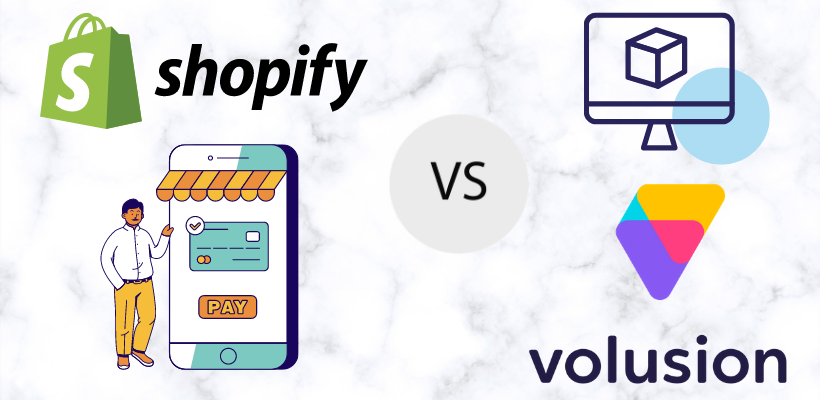

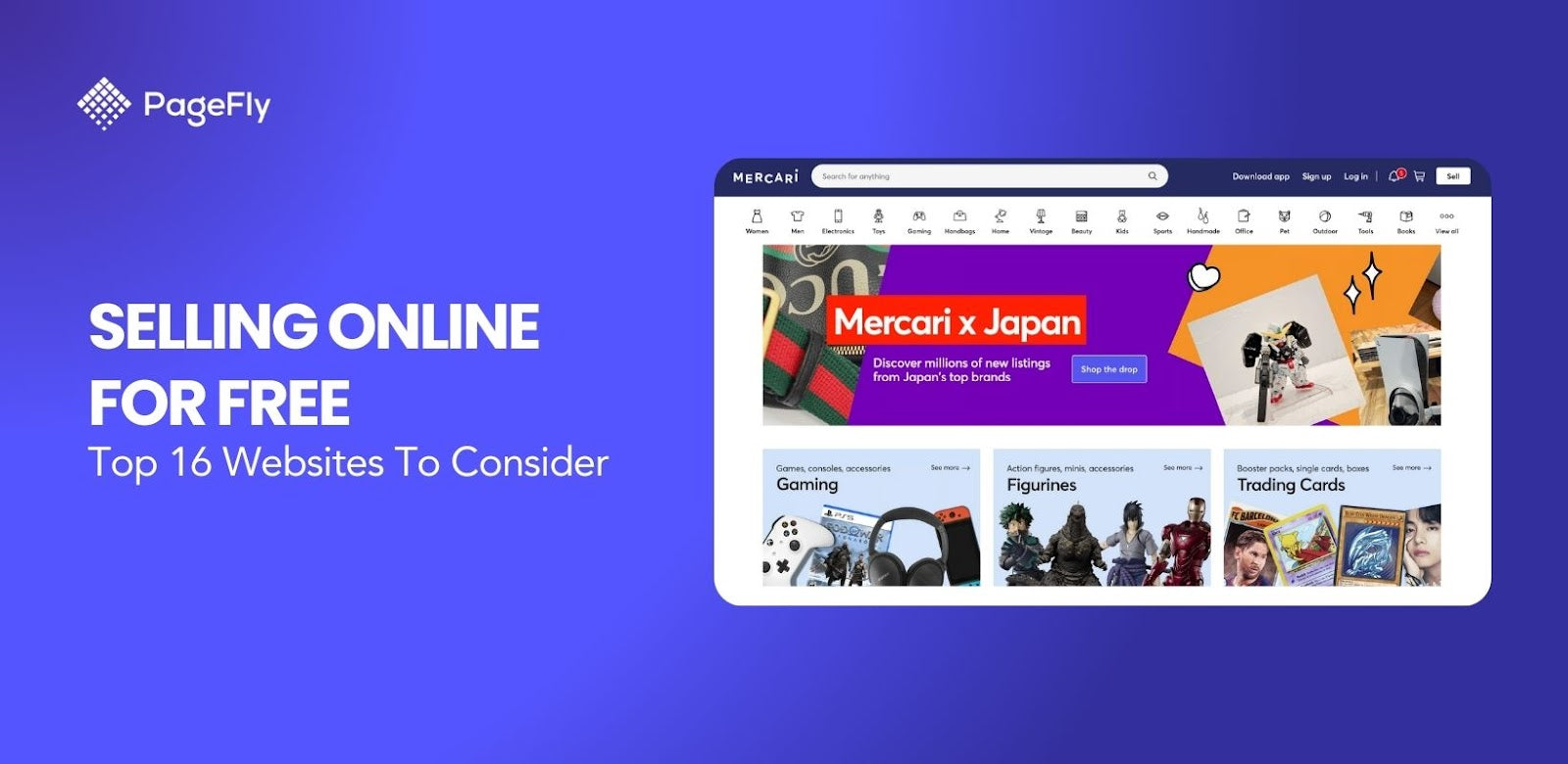
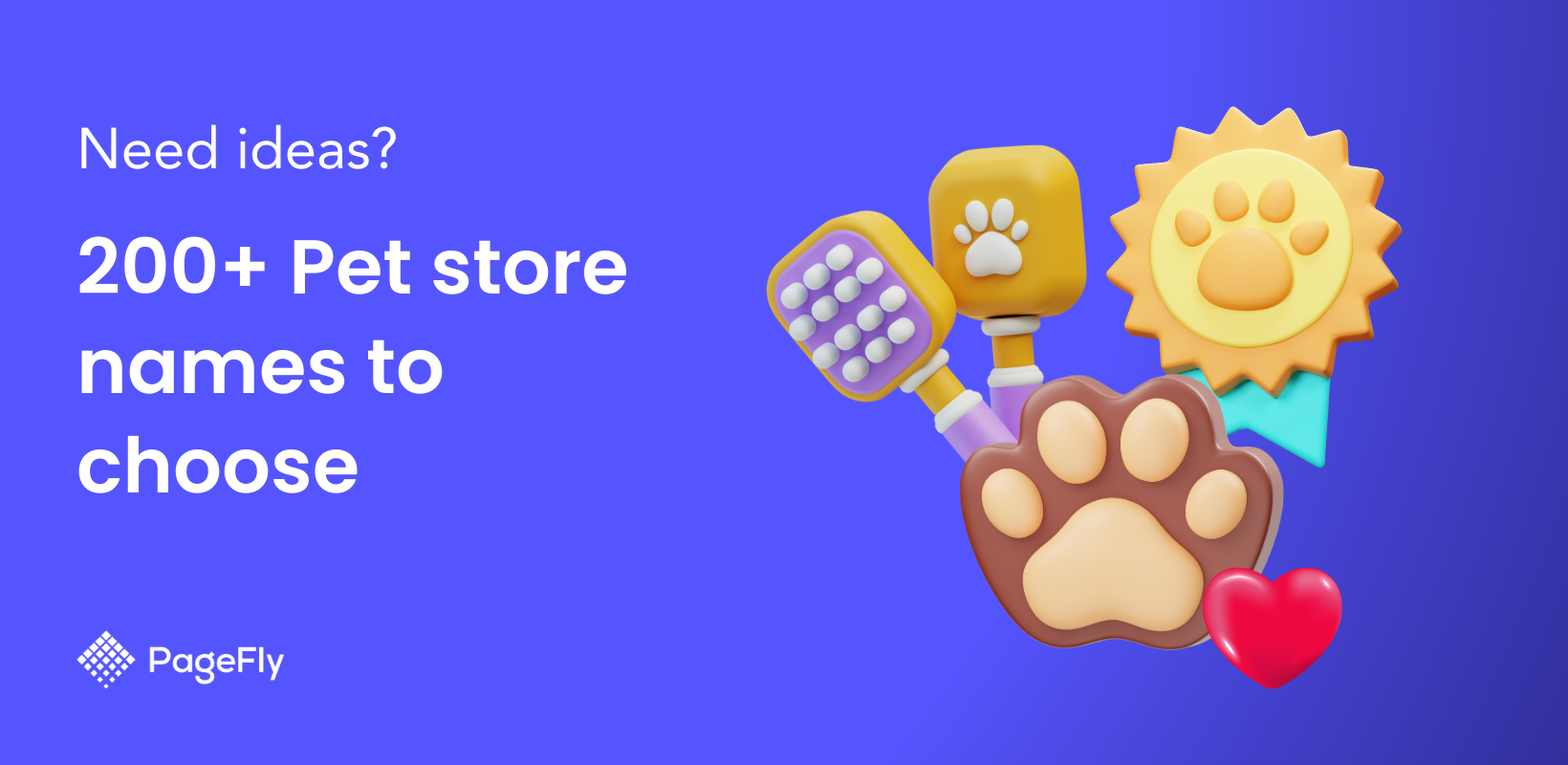
![14 Profitable Small Food Business Ideas for 2025 [Real Numbers]](http://pagefly.io/cdn/shop/articles/1_58b587d2-13db-4aa6-8c19-e40f5c88d3eb.jpg?v=1758255771&width=4460)
![Art Business Names: 350+ Ideas + Free Generator [2025 Updated]](http://pagefly.io/cdn/shop/articles/art_business_name_e94a54e9-d325-4ba3-94ab-7b4297952312.png?v=1760062968&width=1640)

